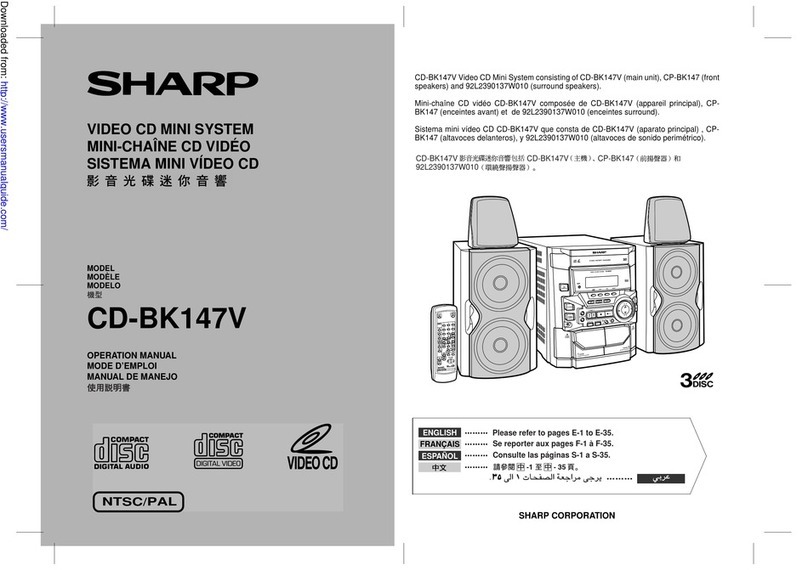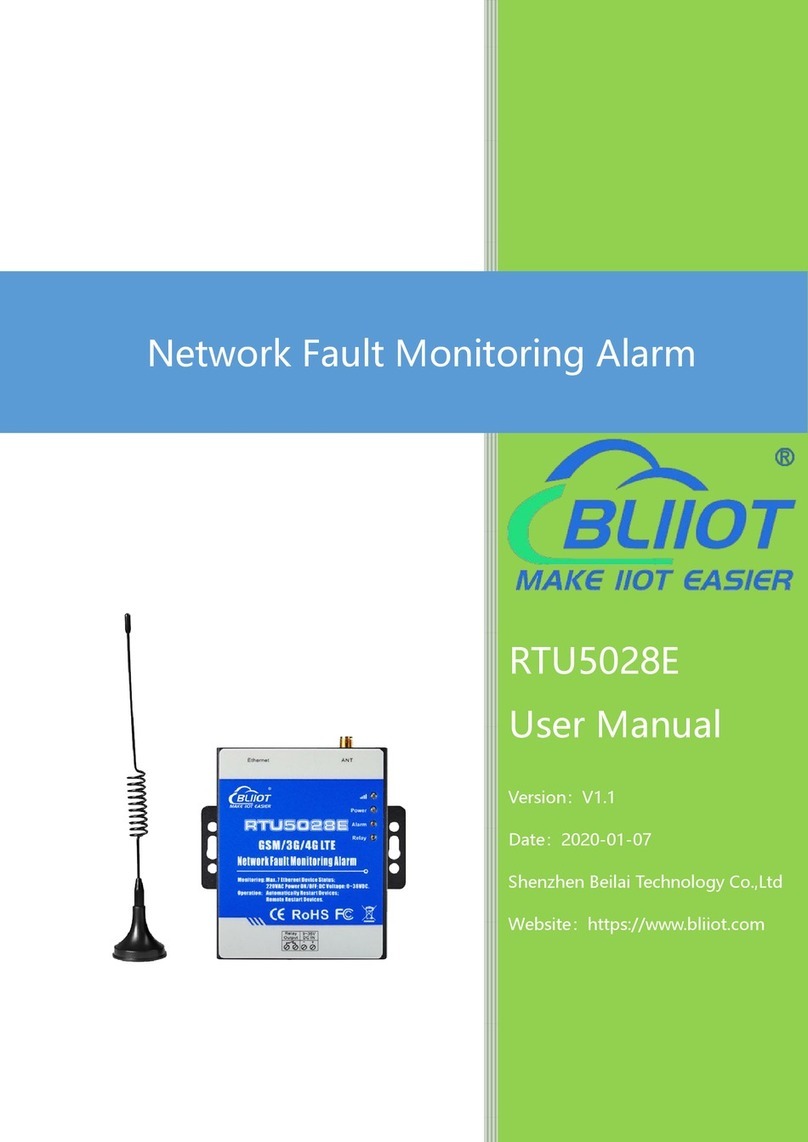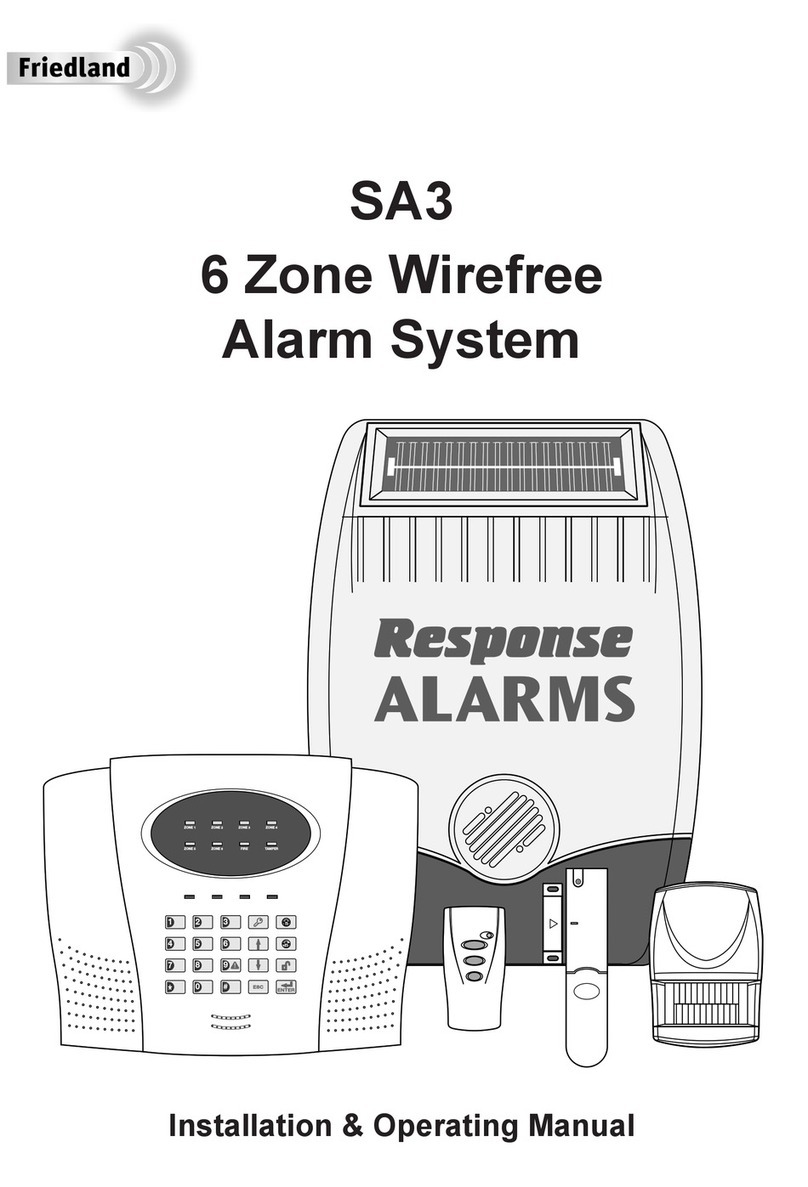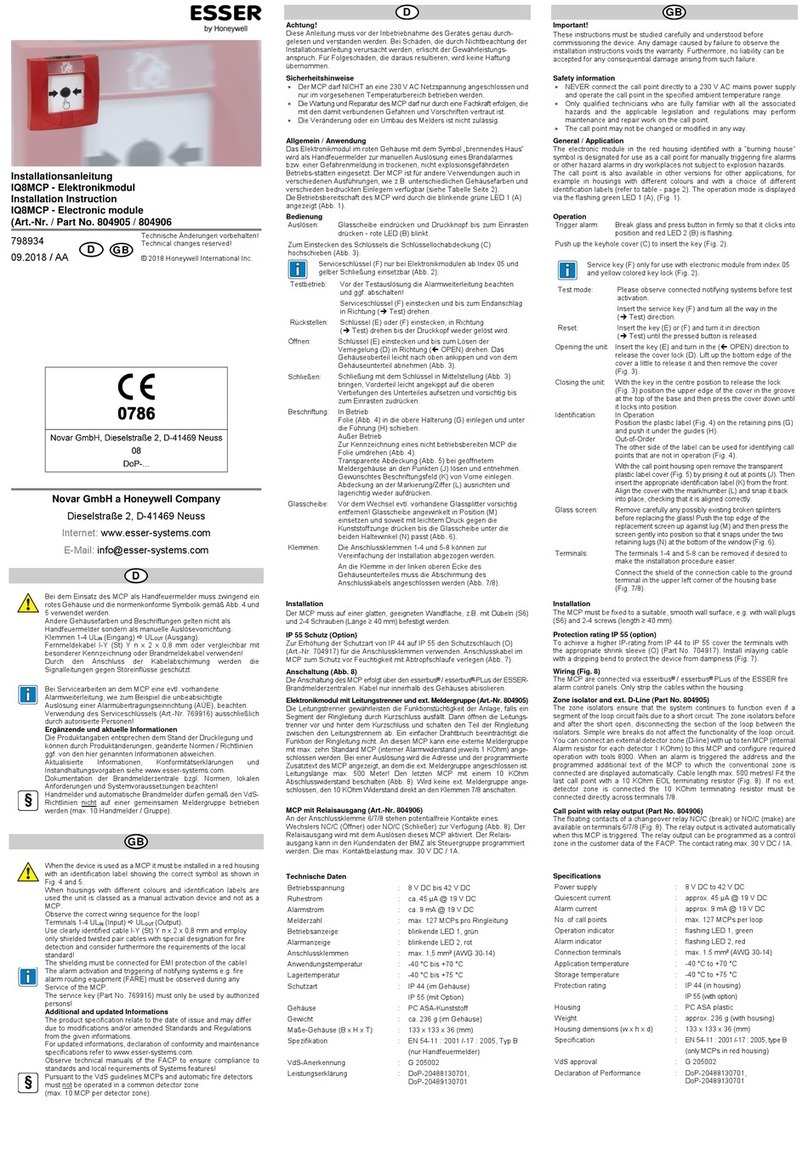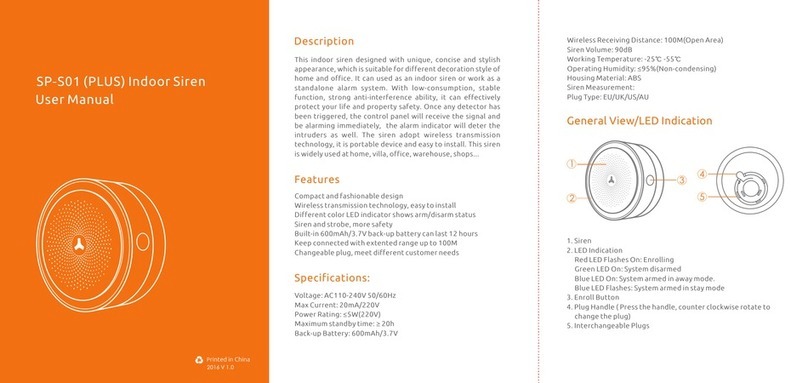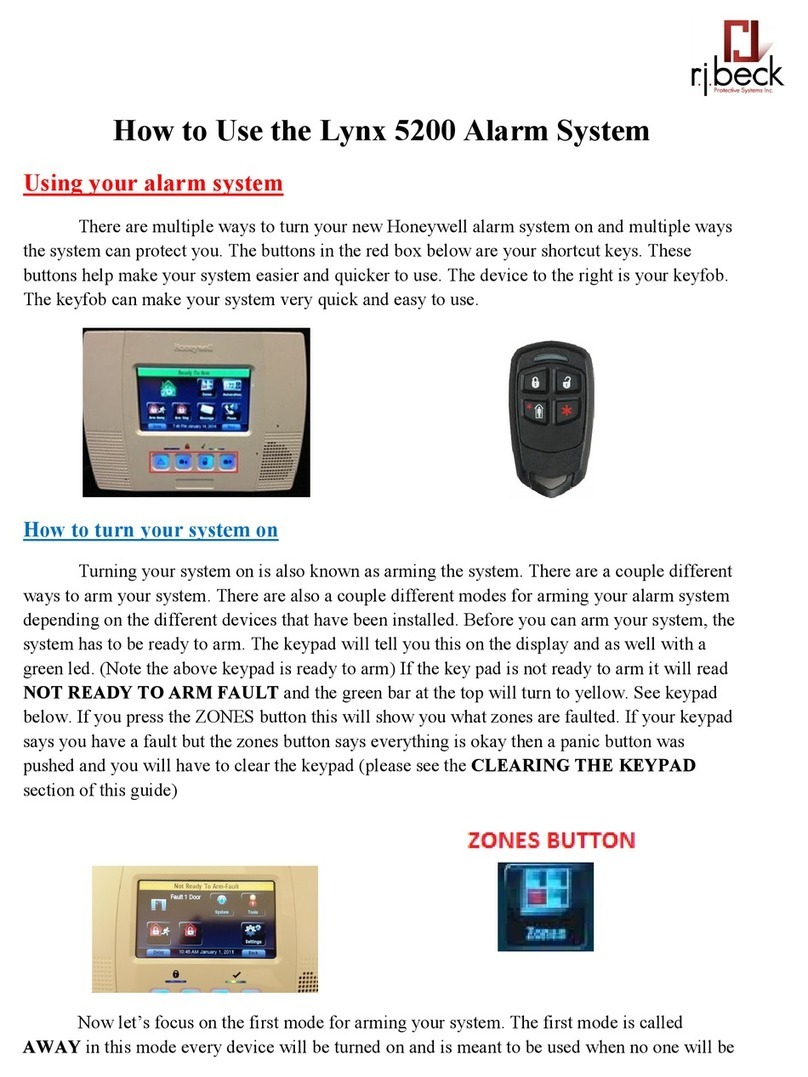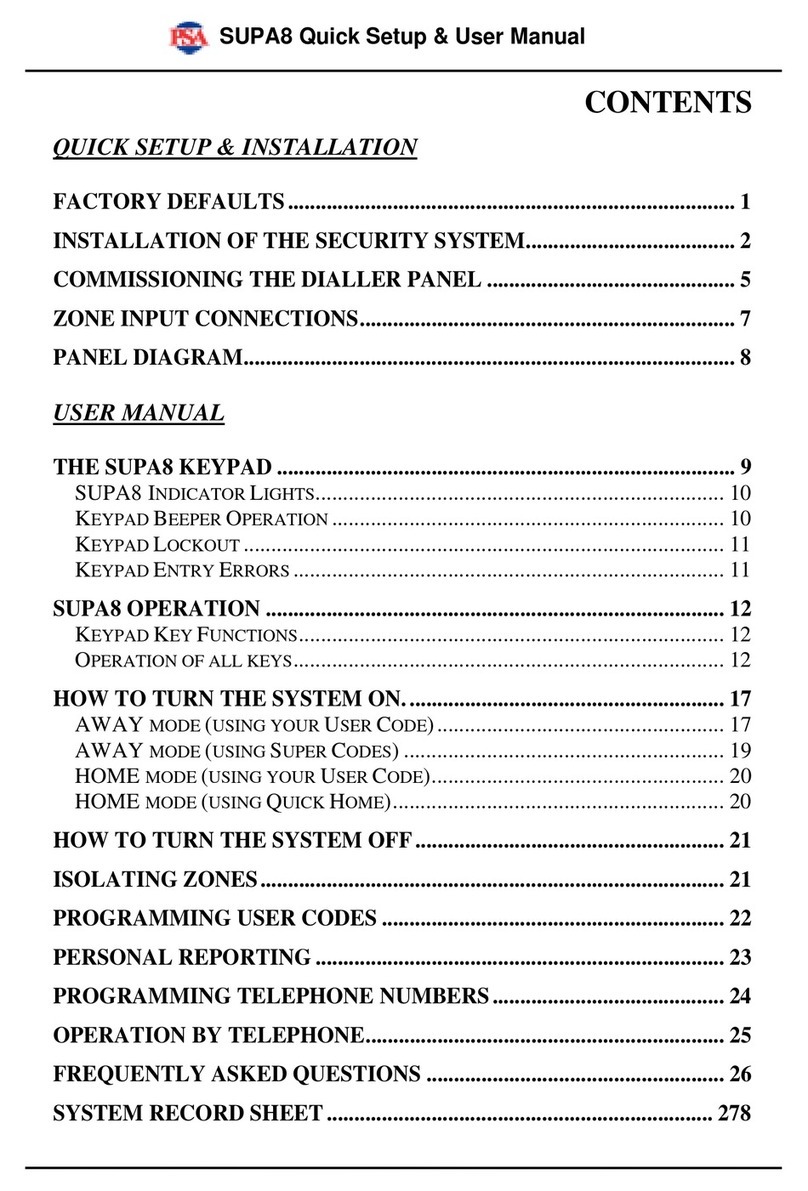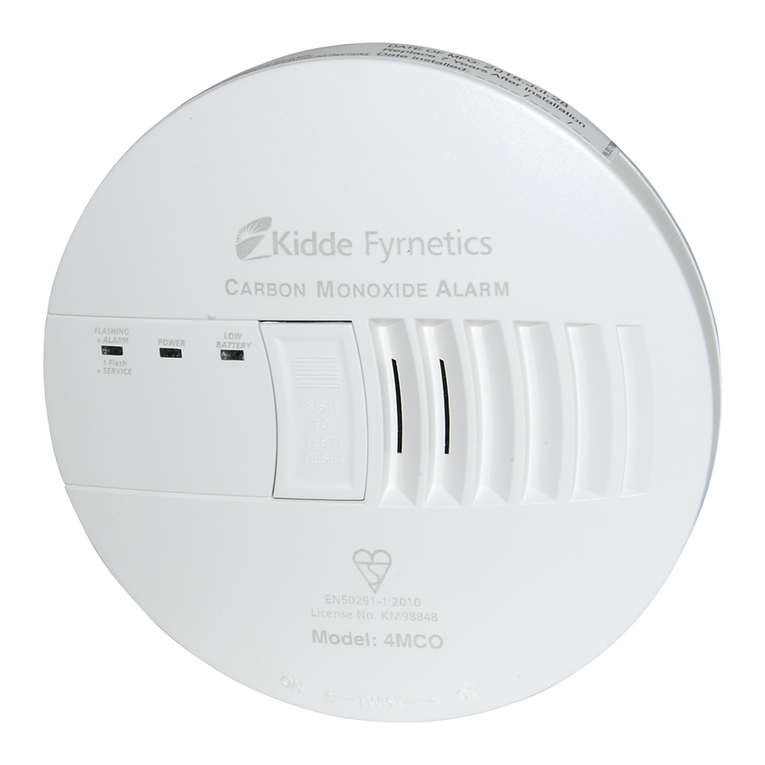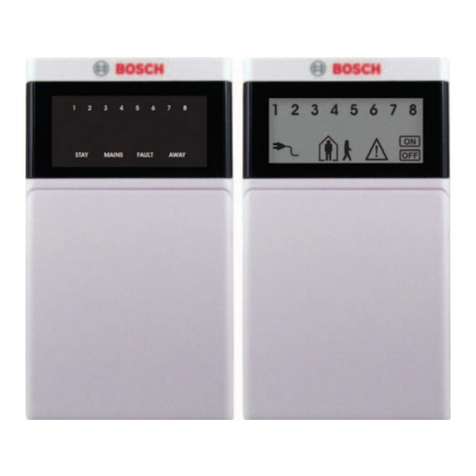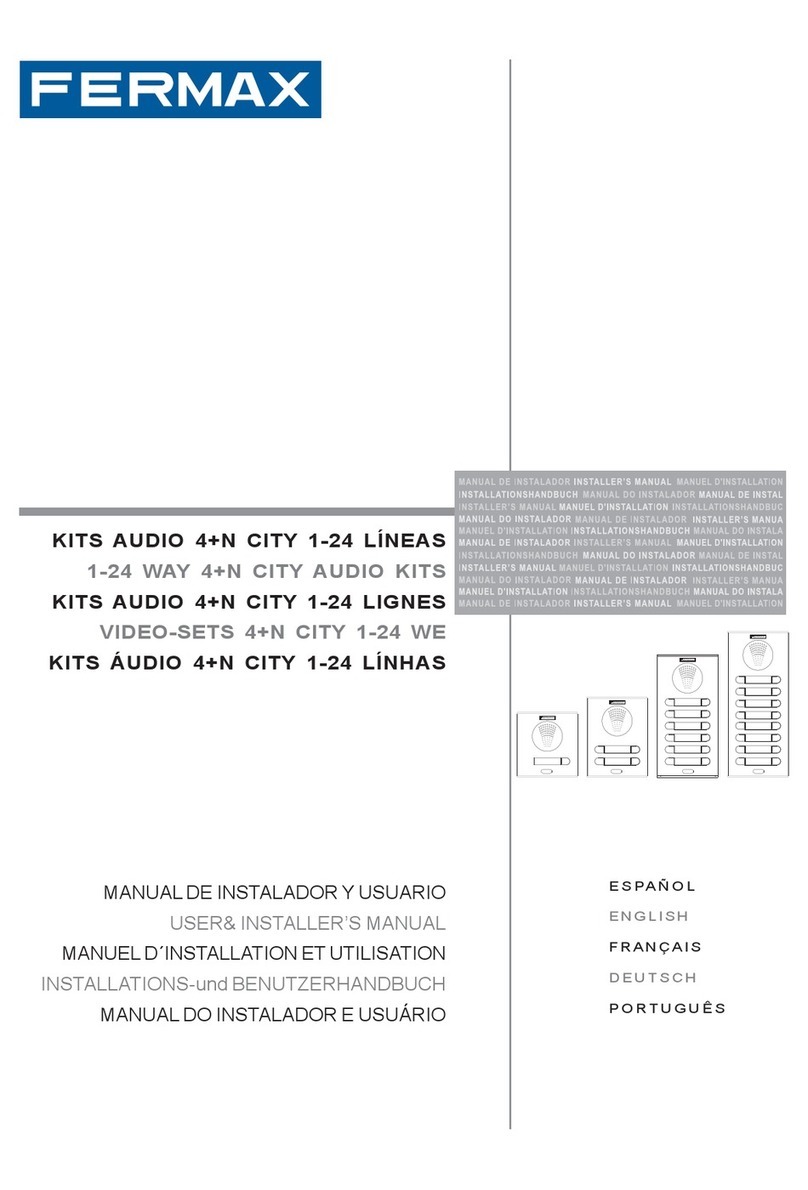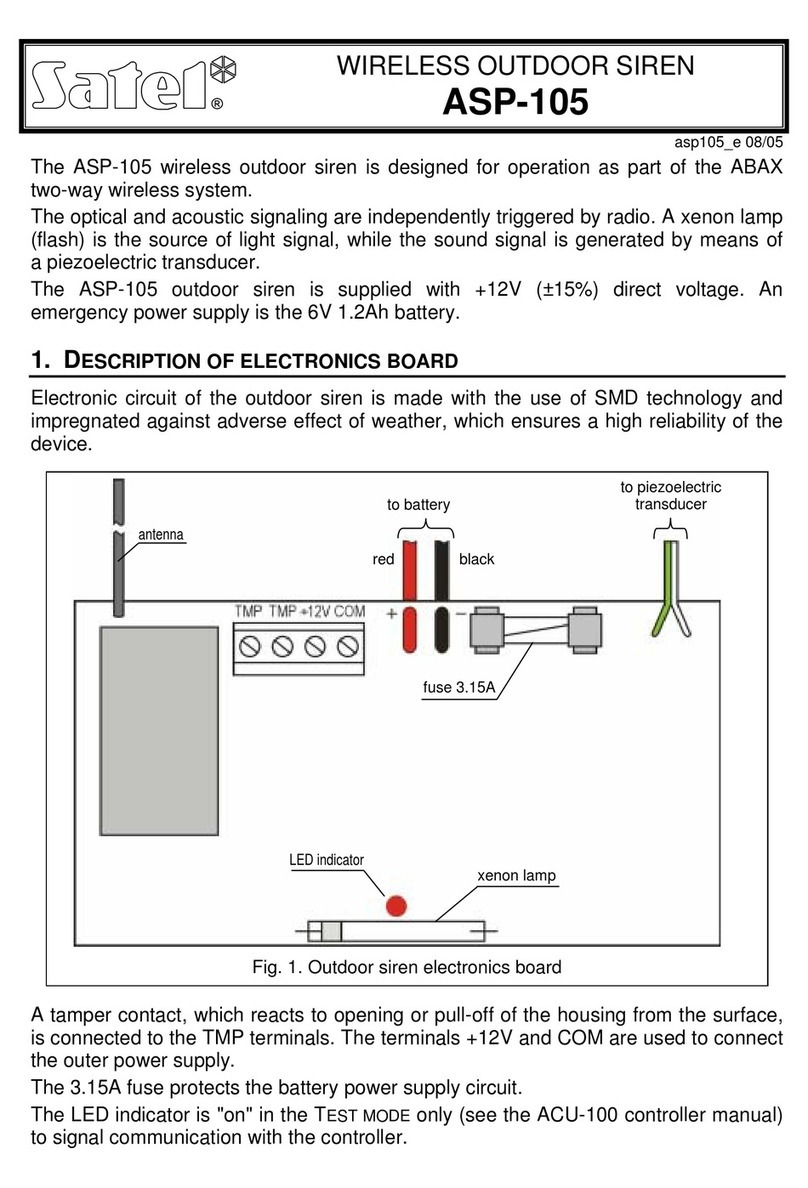Gocontrol Wireless Security System User manual

Wireless Security System
Operation &
User’s Guide
PRINTER’S INSTRUCTIONS:
GUIDE,USER,GO CNTRL - LINEAR P/N: 230083 AX1 - INK: BLACK - MATERIAL: 20 LB. MEAD BOND WITH 80 LB. WHITE COATED COVER - SIZE: 5.500” X 8.500” - SCALE: 1-1 - FOLDING: ALBUM FOLD - BINDING: SADDLE-STITCH
WARNING: Owner’s Instruction Notice
Not to be removed by anyone except occupant
Technical Support
866-670-1591
www.2gig.com

Congratulations on your ownership of a GO!control Security System!
This wireless system offers protection for your property against burglary,
protection for yourself and family with 24-hour emergency monitoring, and
optionally fire and carbon monoxide detection for your home.
The heart of the system is the Control Panel. It receives the wireless radio
signals from remote system “sensors” that monitor doors, windows, motion
detectors, smoke detectors, carbon monoxide detectors, and panic buttons.
The Control Panel processes these signals and controls the alarm siren. The
system can communicate to an alarm monitoring “Central Station” over the
regular telephone network and optionally over the cellular telephone network
to report violations, alarms, and system status.
The Control Panel is operated using its color touch screen display that shows
easy to identity buttons and icons. The system can be armed or disarmed
directly at the Control Panel, or by using optional key fob remote controls, or
remotely over the telephone.The Control Panel displays helpful information
regarding the system and sensor status, system and alarm history, and
trouble alerts.
Being fully “supervised”, the GO!control Security System continuously
monitors itself and its sensors. If an issue occurs, such as a low sensor
battery, the trouble alert will be displayed and logged by the Control Panel
and optionally reported to the Central Monitoring Station. This way, the
trouble can be addressed and corrected promptly, maintaining the integrity
of the system.
With the system’s built-in Z-Wave home automation capability, you can
control your Z-Wave enabled household appliances from the Control Panel
or remotely from a PC and the Internet from anywhere in the world... even
through your cell phone! (This is an optional feature, check with your security
professional for availability with your system.)
Many insurance companies offer discounts on homeowners and renters
policies when a security system is installed. Discount credits vary with
different companies and generally increase in savings with an increase in the
level of protection. Ask your insurance agent about savings available to you.
The GO!control Security System

1
Table of Contents
System Overview. . . . . . . . . . . . . . . . . . . . . . . . . . . . . . . . 2
General Information. . . . . . . . . . . . . . . . . . . . . . . . . . . 2
Features . . . . . . . . . . . . . . . . . . . . . . . . . . . . . . . . . . . . . 2
General Operation . . . . . . . . . . . . . . . . . . . . . . . . . . . . 3
Sensor Types . . . . . . . . . . . . . . . . . . . . . . . . . . . . . . . 3
Fire Protection. . . . . . . . . . . . . . . . . . . . . . . . . . . . . . 3
Burglary Protection . . . . . . . . . . . . . . . . . . . . . . . . . 3
User Codes. . . . . . . . . . . . . . . . . . . . . . . . . . . . . . . . . 3
Alarms. . . . . . . . . . . . . . . . . . . . . . . . . . . . . . . . . . . . . 3
Control Panel Features. . . . . . . . . . . . . . . . . . . . . . . . . . . 4
Wireless Sensors . . . . . . . . . . . . . . . . . . . . . . . . . . . . . . . 5
Main Display Screens . . . . . . . . . . . . . . . . . . . . . . . . . . . 6
Home Screen . . . . . . . . . . . . . . . . . . . . . . . . . . . . . . . . 6
Security Screen . . . . . . . . . . . . . . . . . . . . . . . . . . . . . . 6
Arming Screen . . . . . . . . . . . . . . . . . . . . . . . . . . . . . . . 6
Menu Screen . . . . . . . . . . . . . . . . . . . . . . . . . . . . . . . . 6
Status Screen . . . . . . . . . . . . . . . . . . . . . . . . . . . . . . . . 6
Burglary Protection. . . . . . . . . . . . . . . . . . . . . . . . . . . . . . 7
Operating the System . . . . . . . . . . . . . . . . . . . . . . . . . 7
Sensor Status . . . . . . . . . . . . . . . . . . . . . . . . . . . . . . . . 8
Checking that All Sensors are Closed . . . . . . . . . . . 8
Viewing Each Sensor’s Status . . . . . . . . . . . . . . . . . . 8
Force Bypassing Sensors . . . . . . . . . . . . . . . . . . . . 9
Manual Bypassing or Un-bypassing Sensors . . . 9
Stay Mode . . . . . . . . . . . . . . . . . . . . . . . . . . . . . . . . . . 10
Entry Delay. . . . . . . . . . . . . . . . . . . . . . . . . . . . . . . . 10
Quick Exit . . . . . . . . . . . . . . . . . . . . . . . . . . . . . . . . . 10
Arming to Stay Mode . . . . . . . . . . . . . . . . . . . . . . . 11
Away Mode . . . . . . . . . . . . . . . . . . . . . . . . . . . . . . . . . 12
Exit and Entry Delays . . . . . . . . . . . . . . . . . . . . . . . 12
Silent Exit . . . . . . . . . . . . . . . . . . . . . . . . . . . . . . . . . 12
Quick Exit . . . . . . . . . . . . . . . . . . . . . . . . . . . . . . . . . 12
Auto Stay Mode . . . . . . . . . . . . . . . . . . . . . . . . . . . 12
Arming to Away Mode. . . . . . . . . . . . . . . . . . . . . . 13
Disarming the System . . . . . . . . . . . . . . . . . . . . . . . . 14
Disarming from Stay Mode . . . . . . . . . . . . . . . . . . 14
Disarming from Away Mode. . . . . . . . . . . . . . . . . 14
If a Burglary Alarm Occurs. . . . . . . . . . . . . . . . . . . . 15
Burglary Alarm Siren . . . . . . . . . . . . . . . . . . . . . . . 15
Alarm Memory. . . . . . . . . . . . . . . . . . . . . . . . . . . . . 15
Optional 2-Way Voice Communications . . . . . . . 15
Key Fob Arming and Disarming . . . . . . . . . . . . . . . . 16
Key Fob Arming to Stay Mode . . . . . . . . . . . . . . . 16
Key Fob Arming to Away Mode . . . . . . . . . . . . . . 16
Key Fob Disarming . . . . . . . . . . . . . . . . . . . . . . . . . 16
Key Fob Emergency . . . . . . . . . . . . . . . . . . . . . . . . 16
Key Fob Auxiliary . . . . . . . . . . . . . . . . . . . . . . . . . . 16
Wireless Keypad Arming and Disarming . . . . . . . . 17
Wireless Keypad Arming to Stay Mode . . . . . . . 17
Wireless Keypad Arming to Away Mode . . . . . . 17
Wireless Keypad Disarming . . . . . . . . . . . . . . . . . 17
Wireless Keypad Fire Emergency . . . . . . . . . . . . 17
Wireless Keypad Police Emergency . . . . . . . . . . 17
Fire Protection . . . . . . . . . . . . . . . . . . . . . . . . . . . . . . . . . 18
Fire Alarm System . . . . . . . . . . . . . . . . . . . . . . . . . . . 18
Manual Fire Alarm . . . . . . . . . . . . . . . . . . . . . . . . . 18
Automatic Fire Alarm . . . . . . . . . . . . . . . . . . . . . . . 18
Silencing a False Fire Alarm . . . . . . . . . . . . . . . . . 18
Recommended Smoke Detector Locations . . . . . . 19
Emergency Evacuation Plan. . . . . . . . . . . . . . . . . . . 20
Emergency Functions . . . . . . . . . . . . . . . . . . . . . . . . . . . 21
24-Hour Emergency Buttons . . . . . . . . . . . . . . . . . . 21
Panic. . . . . . . . . . . . . . . . . . . . . . . . . . . . . . . . . . . . . 21
Fire. . . . . . . . . . . . . . . . . . . . . . . . . . . . . . . . . . . . . . . 21
Emergency. . . . . . . . . . . . . . . . . . . . . . . . . . . . . . . . 21
System Trouble Alerts. . . . . . . . . . . . . . . . . . . . . . . . . . . 22
Trouble Alert Icon. . . . . . . . . . . . . . . . . . . . . . . . . . . . 22
Nighttime Trouble Alert Holdoff . . . . . . . . . . . . . . . . 22
System Status Icons . . . . . . . . . . . . . . . . . . . . . . . . . . . . 23
AC Power Icon . . . . . . . . . . . . . . . . . . . . . . . . . . . . . . 23
Phone Line Failure Icon. . . . . . . . . . . . . . . . . . . . . . . 23
Backup Battery Status Icon . . . . . . . . . . . . . . . . . . . 23
Test Mode Icon . . . . . . . . . . . . . . . . . . . . . . . . . . . . . . 23
Remote Installer Access Icon . . . . . . . . . . . . . . . . . 23
Radio Modem Icon. . . . . . . . . . . . . . . . . . . . . . . . . . . 23
Messaging . . . . . . . . . . . . . . . . . . . . . . . . . . . . . . . . . . . . 24
System Text Messages . . . . . . . . . . . . . . . . . . . . . . . 24
Displaying Messages . . . . . . . . . . . . . . . . . . . . . . . . 24
Reading Messages. . . . . . . . . . . . . . . . . . . . . . . . . 24
Reading Confidential Messages . . . . . . . . . . . . . 25
Filtering Messages. . . . . . . . . . . . . . . . . . . . . . . . . . . 25
Sorting Messages . . . . . . . . . . . . . . . . . . . . . . . . . . . 25
Remote Control by Telephone . . . . . . . . . . . . . . . . . . . . 26
Telephone Remote . . . . . . . . . . . . . . . . . . . . . . . . . . . 26
Calling the System . . . . . . . . . . . . . . . . . . . . . . . . . 26
Remote Control . . . . . . . . . . . . . . . . . . . . . . . . . . . . 27
Bypassing Sensors Remotely. . . . . . . . . . . . . . . . 27
System Toolbox . . . . . . . . . . . . . . . . . . . . . . . . . . . . . . . . 28
User Codes . . . . . . . . . . . . . . . . . . . . . . . . . . . . . . . . . 28
User Code Setup. . . . . . . . . . . . . . . . . . . . . . . . . . . 28
Adding a User Code . . . . . . . . . . . . . . . . . . . . . . . . 28
Changing a User Code . . . . . . . . . . . . . . . . . . . . . . 28
Deleting a User Code . . . . . . . . . . . . . . . . . . . . . . . 29
Duress User Code. . . . . . . . . . . . . . . . . . . . . . . . . . 29
Adding a Duress User Code . . . . . . . . . . . . . . . . . 29
Secret Duress Button. . . . . . . . . . . . . . . . . . . . . . . 29
System History . . . . . . . . . . . . . . . . . . . . . . . . . . . . . . 30
System Test . . . . . . . . . . . . . . . . . . . . . . . . . . . . . . . . . 31
Sensor Test . . . . . . . . . . . . . . . . . . . . . . . . . . . . . . . 31
Panel Test. . . . . . . . . . . . . . . . . . . . . . . . . . . . . . . . . 31
Telephone Test . . . . . . . . . . . . . . . . . . . . . . . . . . . . . . 32
Cell Phone Test . . . . . . . . . . . . . . . . . . . . . . . . . . . . . . 33
Chime Options. . . . . . . . . . . . . . . . . . . . . . . . . . . . . . . 34
Brightness / Volume. . . . . . . . . . . . . . . . . . . . . . . . . . 35
Backlight Timeout. . . . . . . . . . . . . . . . . . . . . . . . . . . . 35
Display Cleaning. . . . . . . . . . . . . . . . . . . . . . . . . . . . . 36
Touch Screen Calibration . . . . . . . . . . . . . . . . . . . . . 36
Set Date and Time . . . . . . . . . . . . . . . . . . . . . . . . . . . 37
Display Version . . . . . . . . . . . . . . . . . . . . . . . . . . . . . . 37
Installer Set Options . . . . . . . . . . . . . . . . . . . . . . . . . . . . 38
Siren Run Time . . . . . . . . . . . . . . . . . . . . . . . . . . . . . . 38
Fire Horn Run Time. . . . . . . . . . . . . . . . . . . . . . . . . . . 38
Exit Delay . . . . . . . . . . . . . . . . . . . . . . . . . . . . . . . . . . . 38
Entry Delays . . . . . . . . . . . . . . . . . . . . . . . . . . . . . . . . 38
24-Hour Emergency Functions. . . . . . . . . . . . . . . . . 39
Quick Arming. . . . . . . . . . . . . . . . . . . . . . . . . . . . . . . . 39
Quick Bypass . . . . . . . . . . . . . . . . . . . . . . . . . . . . . . . 39
Quick Exit . . . . . . . . . . . . . . . . . . . . . . . . . . . . . . . . . . . 39
Auto Un-bypass . . . . . . . . . . . . . . . . . . . . . . . . . . . . . 39
Auto Stay . . . . . . . . . . . . . . . . . . . . . . . . . . . . . . . . . . . 39
Key Fob Arm/Disarm Sound . . . . . . . . . . . . . . . . . . . 40
Key Fob Disarm After Alarm Sound. . . . . . . . . . . . . 40
Exit Delay Restart . . . . . . . . . . . . . . . . . . . . . . . . . . . . 40
Cancel Time. . . . . . . . . . . . . . . . . . . . . . . . . . . . . . . . . 40
Cancel Display . . . . . . . . . . . . . . . . . . . . . . . . . . . . . . 41
Dialer Delay. . . . . . . . . . . . . . . . . . . . . . . . . . . . . . . . . 41
2-Way Voice . . . . . . . . . . . . . . . . . . . . . . . . . . . . . . . . 41
Telephone Remote Control Answer. . . . . . . . . . . . . 41
Regulatory Information. . . . . . . . . . . . . . . . . . . . . . . . . . 42
Wireless Product Notice. . . . . . . . . . . . . . . . . . . . . . 42
FCC Part 15 Notice . . . . . . . . . . . . . . . . . . . . . . . . . . . 42
FCC Telephone Rules and Regulations . . . . . . . . . . 42
FCC Part 68 Notice . . . . . . . . . . . . . . . . . . . . . . . . . . . 43
Industry Canada Notice (for Canadian users). . . . 44
Service Information. . . . . . . . . . . . . . . . . . . . . . . . . . . . . 45
Important Power Supply Notice . . . . . . . . . . . . . . . 45
Important Notice . . . . . . . . . . . . . . . . . . . . . . . . . . . . . . . 46
Alarm System Limitations . . . . . . . . . . . . . . . . . . . . . 46
Limited Warranty . . . . . . . . . . . . . . . . . . . . . . . . . . . . . . . 47
Index . . . . . . . . . . . . . . . . . . . . . . . . . . . . . . . . . . . . . . . . . 48

2
System Overview
General Information
This system provides three forms of protection: burglary, fire, and emergency,
depending on the options set by the installer. The system consists of the
Control Panel with a color touch screen, wireless sensors that provide
perimeter and interior burglary protection, and wireless smoke and carbon
monoxide detectors. In addition, optional remote control key fobs, wireless
panic pendants, and wireless keypads may have been provided or installed.
The system monitors all protection “zones” and the system’s status. It will
display monitoring information and control the alarm siren.Your system may
also have been setup to send alarm and status reports to a Central Monitoring
Station and has the capability for 2-way voice communications with the alarm
monitoring operator.
Features
Following is a list of standard features and options that can be included in
your system. Ask your installer which options are available to you and check
the boxes that apply.
STAY and AWAY arming modes. Stay Mode arms the system perimeter only and✓
is used typically at night when the premises are occupied. Away Mode arms the
system perimeter and interior, it’s used when the premises are unoccupied.
Eight user unique 4-digit codes to operate the system. The system supports one✓
“Master User Code” that can assign and maintain the other seven User Codes.
One of the eight User Codes functions as a Duress User Code. Controlling the system✓
with this code gives the appearance of normal operation, but using it secretly sends a
“duress” report to the Central Monitoring Station to initiate a silent alarm call for help.
Voice announcements from the Control Panel. The system has a large vocabulary✓
of descriptive words that can be assigned to sensors so each will have a unique
announcement such as “front door” or “baby’s room window” if desired.
Home automation with the built-in Z-Wave controller for remote✓
controlling Z-Wave enabled home appliances (optional feature).
Alarm history with system event log. Each alarm and system alert is logged✓
into the system’s memory. These events can be displayed and reviewed at
the Control Panel or remotely by the Central Monitoring Station.
Real time clock and calendar shows on the system’s display✓
and is used to time stamp items in the event log.
2-way voice communication. After an alarm, the system can connect with a❑
Central Station operator so they can converse with people in the premises.
Remote control of the system over the telephone.❑
Remote control of the system using a Web-enabled device through the Internet.❑
Three optional 24-hour emergency functions: PANIC, FIRE, and EMERGENCY.❑
These functions can be activated by buttons on the Control Panel, using wireless
sensors, from the wireless keypad, or from portable pendant devices.

3
System Overview
General Operation
Following are general operational concepts that your system supports.
Understanding these concepts will help you to use your security system to
it fullest extent.
Sensor Types
The system’s wireless sensors have been assigned to selected “types”
(sometimes called “zones” in the alarm industry).The sensor type determines
how and when the system will react to a signal from the sensor. Some sensors
are armed 24 hours a day, other sensors are only armed when the system is
armed.
Fire Protection
If fire protection wireless smoke detectors have been installed in your system,
they are armed 24 hours-a-day. They will sound an alarm when smoke is
detected and can report the fire alarm to the Central Monitoring Station. Refer
to the Fire Alarm System section of this manual for important emergency
planning and evacuation information.
Burglary Protection
Burglary protection is provided by perimeter and interior sensors. When the
system is armed in the Away Mode, both perimeter and interior sensors are
armed and can trigger an alarm. When the system is armed in the Stay Mode,
only the perimeter sensors are armed and can trigger an alarm.
Both arming modes offer an “Exit Delay” that allows time to leave the
premises without triggering the alarm. Upon re-entry, the system offers an
“Entry Delay” through certain points of protection that allows you time to
disarm the system before an alarm is triggered.
Sensors can be set to sound a chime and/or a voice announcement when
they are triggered. So you can monitor your doors and windows while the
system is disarmed.
User Codes
The system installer has pre-programmed a Master User Code for your
system. This code can be used to control the system as well as assign and
change the other seven User Codes. The Master User Code can also access
several system setup settings in the UserToolbox.
Alarms
When an alarm occurs, the Control Panel’s siren and an external siren (if
installed) will sound for a preset time. During alarms and after disarming, the
alarm history button will display all the alarms that have occurred, and which
sensors were involved. The alarm history clears the next time the system is
armed or can be cleared manually.

4
Control Panel Features
ALARM SOUNDER
AND SPEAKER COLOR DISPLAY
WITH TOUCH SCREEN
MICROPHONE
EMERGENCY
BUTTON / INDICATOR
HOME
BUTTON / INDICATOR
Lights WHITE when enabled for emergency alarms
Blinks WHITE during emergency alarm
Lights GREEN when ALL sensors are closed (ready to arm)
Not lit when ANY sensor is open (not ready to arm)
Lights RED while system is armed
Blinks RED during the Entry Delay
Blinks RED during an alarm
Blinks RED after an alarm while system is still armed
Indicator flashes during power outages
(system on battery backup)
Flashes GREEN when ALL sensors are closed (ready to arm)
Flashes ORANGE when ANY sensor is open (not ready to arm)
Flashes RED while system is armed
For voice communication
with the Central Station
Shows all system information, status,
programming, and functions as the keypad
Display cycles clock, calendar, and weather
(press to manually change)
Sounds all system local alarms,
voice prompts, system sounds, and
audio for 2-way voice communications
with the Central Station
Sensor Status
Arming Status
Alarm Memory
Power Outage

5
Wireless Sensors
Your security system has wireless sensors. Some sensors will be visible, other
sensors are hidden inside the door jambs. Depending on your installation,
there may be other types of sensors shown below. Be sure your installer
shows you all the sensors installed in your system.
Motion Sensor
Smoke Detector
Key Fob Remote
Wireless Keypad
Door / Window Sensor
Glass Break Sensor
Carbon Monoxide Detector
Panic Button Remote

6
Main Display Screens
The Home Screen
The Arming Screen
The Menu Screen
The Status Screen
The Control Panel is programmed and operated
using the color touch-screen display. The
display will show various buttons, indicators,
and text to guide and inform you.
The top bar on the display shows the current
system mode, scrolling text of any pending
alerts, and system status icons for AC power,
telephone line, and backup battery.
Home Screen
The Home Screen is the top level screen. It
shows the system status with icons to indicate
system conditions. It also displays the time and
date. The Home Screen displays the SECURITY
and HOME CONTROL buttons. Pressing the
button on the Control Panel will display the
Home Screen.
Security Screen
The Security Screen shows the system status
and offers three buttons for ARM, MENU, and
STATUS. It also displays the time and date. If
messages, alarm, or trouble alerts are pending,
the Security Screen will display buttons
indicating the number of pending messages.
Arming Screen
The Arming Screen is used to arm the security
portion of the system. It displays the system
status and arming buttons for STAY and AWAY.
Two option check box buttons for ENTRY
DELAY and SILENT EXIT are displayed.
Menu Screen
The Menu Screen shows the system status
and offers buttons for ARM and TOOLBOX. If
the emergency option is set, an EMERGENCY
button is displayed. Two option check box
buttons for CHIME and VOICE are displayed.
Status Screen
The Status Screen lists system status and any
alerts. The date and time of any alerts are
listed in the displayed log. One option button
for SILENCE is displayed, it stops the voice
announcement of the system status.
The Security Screen
Trouble Alert
Alarm Memory
Message

7
Burglary Protection
Operating the System
When your system was setup by your installer, wireless sensors were placed to monitor specific
doors and windows. The installer selected these doors and windows as likely places where an
unlawful intrusion might occur and could be detected. Each sensor was programmed to have the
system react in a specific way.
Some sensor types such as smoke detectors, carbon monoxide detectors, panic buttons, etc. are
always active and can trigger an alarm at any time. Other sensors on protected doors and windows
are part of the burglary protection part of the system, and can be turned on or off. Turning on the
burglary protection part of the security system is called “Arming the System”. The burglary
protection part of the system can be armed in two modes; Stay Mode or Away Mode.
Refer to the floor plan below. It shows a typical residential installation and the various types of
wireless sensors and their function.
Example Security System Floor Plan
CP
GARAGE
ES
DW
PIR
CP - CONTROL PANEL
DW - DOOR/WINDOW SENSOR
PIR - MOTION DETECTOR
SMKE - SMOKE DETECTOR
CO - CARBON MONOXIDE DETECTOR
GB - GLASS BREAK SENSOR
PAD - WIRELESS KEYPAD
ES - EXTERNAL SIREN
LIVING
DINING
KITCHEN
ENTRY
BED
BATH DEN
GB
SMKE
GB
BED
PAD
CO
DWDW
DW
DW
DW
DW
DW
DW
DW
SMKE
PIR
DW
DW
DW
FRONT AND SIDE DOOR SENSORS
HAVE EXIT/ENTRY DELAY
SMKE
SIDE AND MAIN GARAGE
DOOR SENSORS HAVE
EXIT/ENTRY DELAY

8
Burglary Protection
Sensor Status
The security system constantly monitors all of the sensors attached to the protected doors and
windows in your home or business. The Control Panel knows if each protected door or window
is open or closed. The open or closed condition of the protected doors and windows is called the
“sensor status”.
For maximum security, all the doors and windows on the premises should be closed when leaving
the building. In some cases, such as when using the security system for protection when staying
at home, it may be desirable to leave some protected doors or windows open. The system uses
“bypasses” to resolve the open door or window conditions. Before the system can be armed, all
protected doors and windows must be closed or bypassed. Bypasses and their two types are
explained in detail on the next page.
Checking that All Sensors are Closed
In most cases, you will be arming the security system with all of the sensor-protected doors and
windows closed. The Control Panel provides several easy ways to verify that all the sensor-protected
doors and windows are closed before arming the system.
The• button will light green if all sensorsare closed. The button will not be lit if ANY
sensorsare open.
The• SECURITY button on the display’sHome Screen will light green if all sensorsare closed.
The SECURITY button will be lit orange if ANY sensorsare open.
The• ARM button on the display’sSecurity Screen will light green if all sensorsare closed. The
ARM button will be lit orange if ANY sensorsare open.
The• ARM button on the display’sMenuScreen will light green if all sensorsare closed. The ARM
button will be lit orange if ANY sensorsare open.
Viewing Each Sensor’s Status
The Control Panel will also show you which sensor-protected doors and windows are open. Your
installer has programmed descriptive names for each sensor-protected door and window. The Control
Panel’s color display will show the names of which door and windows are open.
The top areaof the display on the Home, Security, and MenuScreenswill list any sensorsthat•
are currently open.
Pressing the• STATUS button will also display alist of all open sensorsalong with general system
status and alerts.
THE HOME BUTTON LIGHTSGREEN WHEN
ALL SENSORSARE CLOSED. THE HOME
BUTTON WILL NOT BE LIT WHEN ANY
SENSORSARE OPEN
THE STATUSBAR SHOWSTHE SYSTEM MODE
AND WHAT SENSORSARE OPEN
THE ARM BUTTON ON THE SECURITY AND
MENU SCREENSLIGHTSGREEN WHEN ALL
SENSORSARE CLOSED. THE ARM BUTTON
WILL LIGHT ORANGE WHEN ANY SENSORS
ARE OPEN

9
Burglary Protection
Sensor Bypassing
Before the system can be armed, all protected doors and windows must be closed or bypassed. The
system uses “bypasses” to resolve open sensors on protected doors or windows before arming the
system. When a sensor is bypassed, the system ignores that the door or window is open. There are
two types of sensor bypasses available: forced and manual.
In some cases (such as when using the security system for protection when staying at home) it may
be desirable to leave some sensor-protected doors or windows open. Temporarily bypassing a sensor
for this use is called “force bypassing”. Force bypasses are automatically removed when the
system is disarmed.
Sensor bypassing is also sometimes used when a sensor is requiring service. A sensor’s magnet
might be missing, or an external switch contact connected to a sensor might be faulty, causing
the sensor to be detected as “open” by the Control Panel. In these conditions, you may need to
schedule a service call with your qualified alarm service technician to repair or replace the troubled
sensor. If the security system needs to be armed before the sensor can be serviced, the sensor can
be “manually bypassed” so the rest of the system can be armed. Manual bypasses remain in
place until they are manually removed.
☞ NOTE: Bypassed sensors offer no protection and cannot cause an alarm. Use bypass
if you want to arm your system with one or more sensors open and intentionally
unprotected.
Force Bypassing Sensors
If any sensors are open when the ARM button is pressed, the Control Panel will display the bypass
sensor screen. When the system is disarmed, the force bypassed sensors will be returned to normal.
With one or more sensors open, press1.
ARM from the Security or Menu Screen.
Press2. BYPASS ALL to force
bypass the open sensors.
Enter a User Code (unless3. “Quick
Bypass” has been set by the
installer) to activate the bypass and
continue to the Arming Screen.
Manual Bypassing or Un-bypassing Sensors
In case one or more sensors needs to be manual bypassed because of a trouble condition, or have
their manual bypass removed, use the following steps.
Press1. MENU, TOOLBOX, then
BYPASSED SENSORS.
Enter a User Code.2.
Press the name(s) of the sensors to3.
bypass or un-bypass. The bypass
symbol will display for the manually
bypassed sensors. Bypasses to
all listed sensors can be removed
by pressing UNBYPASS ALL.
Press4. OK.
Manual Bypass Sensors Screen
Force Bypass Sensors Screen

10
Burglary Protection
Stay Mode
Stay Mode is for arming the system when people will be staying on the premises. Stay Mode arms
the sensor-protected perimeter doors and windows while not arming the interior motion sensors or
other interior doors. This allows the premises to be occupied while the system is partially armed.
Stay Mode is used mostly for arming the system during the evening hours after everyone is inside
and no one is expected to enter or leave.
When the system is armed in Stay Mode, you can move about the premises without triggering the
burglary alarm. All the interior burglary protection is off. But, if a sensor-protected perimeter door or
window is opened, an alarm will occur.
Entry Delay
Certain sensors, such as the front door, can be setup by your installer to have a delay before triggering
an alarm. This provides a way for an authorized person returning to enter using a predetermined door
and disarm the system before an alarm is triggered. When arming the system in Stay Mode, an
“Entry Delay” option check box is shown on the Control Panel’s Arming Screen. Normally this option
check box is checked, so the programmed delay doors allow time for disarming the system after
the door is opened. Un-checking this option box removes the delayed alarm trigger from all sensor-
protected doors programmed for delay, causing those entrances to instantly trigger the alarm if they
are opened in Stay Mode.
Quick Exit
A programmable option, called “Quick Exit” may be displayed on the Security Screen while the
system is armed in the Stay Mode. Pressing the Quick Exit button starts a timer to allow someone
to exit or enter through a sensor-protected door programmed for delay without having to disarm the
entire system. When the delay timer runs out, the system returns to the normal Stay Mode.
The Quick Exit option can be turned on or off by your installer, refer to the “Installer Set Options”
section of this manual to see which options have been set for your system.

11
Arming to Stay Mode
Use Stay Mode to arm the system when anyone will be staying home. Stay Mode normally has an
Entry Delay so someone with a User Code can re-enter without causing an alarm.
Close all protected perimeter doors and windows before arming.1.
Verify that the2. button on the Control Panel is lit green indicating that the system is ready
to arm. The SECURITY button and ARM button on the display will also be green when all
sensors are closed.
From the Security Screen, or the Menu Screen, press3. ARM.
If there are any open door or window sensors, the Bypass Screen will appear. Close•
all the sensors displayed or press BYPASS ALL to force bypass the displayed
sensors. NOTE: BYPASSED SENSORS WILL NOT BE ABLE TO TRIGGER AN ALARM.
To bypass sensors, you will need to enter a User Code unless•
the installer has set the system for “Quick Bypass”.
On the Arming Screen, one check box option can be used with Stay Mode.4.
If no one is expected to re-enter, the system can be armed without an Entry•
Delay. All perimeter doors will trigger the alarm instantly. To arm with all
perimeter doors as instant, un-check the ENTRY DELAY option button.
Press5. STAY to arm the system.
To arm the system, you may need to enter a User Code if your•
installer has turned off the system’s “Quick Arming” feature.
The system will arm and show the6. Exit Delay counting down. When the Exit Delay expires, the
system is fully armed in the Stay Mode.
Burglary Protection
The Security Screen
Quick Exit ButtonEntry Delay Check Box
The Arming Screen

12
Away Mode
Away Mode is for arming the system when everyone will be leaving the premises. Away Mode
arms all sensor-protected perimeter doors and windows, interior motion sensors, interior glass break
sensors, and any other sensor-protected interior doors. The premises must be unoccupied while the
system is armed. Away Mode is typically used for arming the system during the daytime hours in a
residential installation, and non-business hours in a commercial installation.
When the system is armed in Away Mode, you cannot move about the premises without triggering
the burglary alarm (if the system is installed with interior protection). An alarm will occur if any
sensor-protected door or window is opened, or interior motion or glass breakage is detected (if
motion or glass breakage detectors are installed in your system).
Exit and Entry Delays
Certain sensors, such as the front door, can be setup by your installer to have a delay before triggering
an alarm. This provides a way for an authorized person to exit and reenter the premises without
triggering an alarm. The “Exit Delay” allows time to leave after arming the system. The “Entry Delay”
allows time to disarm the system before an alarm is triggered.
When arming the system in Away Mode, an “Entry Delay” option check box is shown on the Control
Panel’s Arming Screen. Normally this option check box is checked, so the programmed delay doors
allow time for disarming the system after the door is opened. Un-checking this option box removes
the delayed alarm trigger from all sensor-protected doors programmed for delay, causing those
entrances to instantly trigger the alarm if they are opened in Away Mode. With the Entry Delay
disabled, the system will have to be remotely disarmed with a wireless key fob before entering.
Silent Exit
An option for silencing the exit delay beeps is also available when arming the system in Away Mode.
On the Control Panel’s Arming Screen, a “Silent Exit” option check box is shown. Checking this option
will stop the Control Panel from sounding beeps during the Exit Delay time and double the length of
the Exit Delay. The option resets when the system is disarmed.
Quick Exit
A programmable option, called “Quick Exit” may displayed on the Security Screen while the system
is armed in the Away Mode. Pressing the Quick Exit button starts a timer to allow someone to exit
or enter through a sensor-protected door programmed for delay without having to disarm the entire
system. When the delay timer runs out, the system returns to the normal Away Mode. This option
can be turned on or off by your installer, refer to the “Installer Set Options” section of this manual to
see which options have been set for your system.
☞ NOTE: If interior sensors are installed in the system in certain areas, do not violate
those sensors when using the Quick Exit feature in Away Mode.
Auto Stay Mode
The system may have been programmed by the installer for “Auto Stay Mode”. If this option is on
and the system is armed in Away Mode, if an exit/entry delay sensor is not triggered before the Exit
Delay expires (no one left the premises), the system automatically arms in Stay Mode instead of
Away Mode. Refer to the “Installer Set Options” section of this manual to see which options have
been set for your system.
Burglary Protection

13
Arming to Away Mode
Use the Away Mode to arm the system when everyone will be leaving the home. The Away Mode
normally has an Entry Delay so someone with a User Code can re-enter without causing an alarm.
Interior and perimeter sensors are armed in the away Mode.
Close all sensor-protected doors and windows before arming.1.
Verify that the2. button on the Control Panel is lit green indicating that the system is ready
to arm. The SECURITY button and ARM button on the display will also be green when all
sensors are closed.
From the Security Screen, or the Menu Screen, press3. ARM.
If there are any open door or window sensors, the Bypass Screen will appear. Close•
all the sensors displayed or press BYPASS ALL to force bypass the displayed
sensors. NOTE: BYPASSED SENSORS WILL NOT BE ABLE TO TRIGGER AN ALARM.
To bypass sensors, you will need to enter a User Code unless•
the installer has set the system for “Quick Bypass”.
On the Arming Screen, two check box options can be used with Away Mode.4.
The system can be armed without an• Entry Delay. All perimeter doors will trigger the
alarm instantly. The system will have to be disarmed with a wireless key fob. To arm
with all perimeter doors as instant, un-check the ENTRY DELAY option button.
When the• SILENT EXIT button is checked, the Exit Delay will be doubled
and the beeps that normally sound during exit will not sound.
Press5. AWAY.
To arm the system, you may need to enter a User Code if your•
installer has turned off the system’s “Quick Arming” feature.
The system will arm and show the6. Exit Delay counting down. When the Exit Delay expires, the
system is fully armed in the Away Mode.
When the system is armed in the Away Mode, beeps will sound during•
the Exit Delay (faster beeps during the last 10 seconds). To silence these
beeps, press SILENCE (the Exit Delay will also be extended).
Burglary Protection
The Security Screen The Arming Screen
The Bypass ScreenExit Delay Timer & Silence Button

14
Disarming the System
To stop the Control Panel from triggering burglary alarms, the system will need to be disarmed.
Disarming turns off the burglary detection part of the system for sensors that are not 24-hour sensors.
Disarming also stops any type of alarm in process.
The system should be disarmed from Stay Mode before exiting the premises. The system should be
disarmed from Away Mode before or while entering the premises. When disarming from the Control
Panel or wireless keypad, you will need to enter a valid User Code. A wireless key fob can also be used
to disarm the system. Entering a User Code is not required when disarming with a wireless key fob.
An important feature of the Control Panel is its ability to warn you if an alarm has occurred while
you were away. If an alarm was triggered while the system was armed, the alarm siren will run for
a preset length of time then stop. When you enter to disarm the system, instead of sounding the
normal Entry Delay beeps, the Control Panel will sound repeated fast beeps to warn you that alarm
has occurred while you were away.
WARNING: WHEN ENTERING THE PREMISES TO DISARM THE SYSTEM, IF YOU
HEAR FAST REPEATED BEEPS INSTEAD OF THE NORMAL ENTRY DELAY BEEPS,
USE EXTREME CAUTION!!! AN INTRUDER MAY STILL BE PRESENT INSIDE
THE BUILDING!!! WAIT OUTSIDE AND USE A CELL PHONE TO CALL A FRIEND,
NEIGHBOR, OR LAW ENFORCEMENT FOR ASSISTANCE.
Disarming from Stay Mode
The system should be disarmed from Stay Mode before exiting the premises.
From the Home Screen, press the1. SECURITY button.
From the Security Screen, or the Menu Screen, press2. DISARM.
The Disarm Code Screen will display. The left side of the screen shows any events that have3.
occurred while the system was armed.
Enter a valid User Code to disarm the system.4.
In case you press a wrong key, the• CLEAR button erases the entire entry.
Press• CANCEL if you do not want to disarm at this time.
Disarming from Away Mode
The system should be disarmed from Away Mode while entering the premises.
Enter the premises through a designated Entry Delay sensor-protected door.1.
The Disarm Code Screen will display and the Entry Delay beeps will sound. The left side of the2.
screen shows any events that have occurred while the system was armed.
Enter a valid User Code to disarm the system.3.
In case you press a wrong key, the• CLEAR button erases the entire entry.
Press• CANCEL if you do not want to disarm at this time. (An alarm will occur!)
Burglary Protection
The Security Screen (System Armed) Disarm Code Screen

15
If a Burglary Alarm Occurs
If an armed sensor is tripped while the system is armed in the Stay or Away Mode, and the system
is not disarmed in time, an alarm will occur and the siren will sound. Delayed sensors will start
the Entry Delay to allow time to disarm the system. Instant sensors trigger the alarm right away.
Most sensors will trigger the alarm siren, some sensors may be set to trigger a silent alarm without
sounding the siren.
Burglary Alarm Siren
If there is a burglary alarm tripped while the system is armed, the Control Panel will sound the alarm
siren for a preset time (the time can be changed, see the Installer Set Options section of this manual).
After the time expires, the siren will stop sounding. The system can also be set by the installer to
allow one or two alarm cycles per sensor, per arming period.
Alarm Memory
If an alarm has occurred while the system was armed, the Disarm Screen will show the time and date
of the alarm and the sensor(s) that triggered the alarm.
After the system is disarmed, the Alarm Memory screen will be displayed. The Alarm Memory Screen
shows the sensor(s) that have caused the alarm. If more than one sensor has been triggered, the
display will show the order that alarms occurred. The alarm memory will automatically clear
the next time the system is armed. You can also check the CLEAR ALARM HISTORY button and
press OK to manually clear the alarm memory (24-hour sensors that are still violated will remain in
alarm memory).
Anytime there are events stored in alarm
memory, the Security Screen will display the
button. The number on the button is the
number of sensors that triggered during the
alarm. Press the button to view the Alarm
Memory Screen.
Optional 2-Way Voice Communications
2-way voice communications provides a method for alarm verification and can provide emergency
assistance. The Control Panel contains a built-in microphone that can monitor sounds around the area
of the Control Panel. The built-in microphone and speaker allows 2-way voice communications with
a Central Station operator after an alarm. The operator can converse with people in the premises
through the Control Panel’s speaker and microphone.
Your installer can set the system to use 2-way voice communications after an alarm and/or after a
panic alarm is triggered.
✓ NOTE: If a panic alarm or sensor is set for a silent alarm, the operator will only be able
to listen and not be able to talk. This is for your protection.
Burglary Protection
Disarm Screen Showing Alarms Alarm Memory Screen
Security Screen with Alarm Memory Button

16
Key Fob Arming and Disarming
Your system may be equipped with one or more wireless key fobs. Up
to eight key fobs can be used to control the system remotely. Each
key fob has four buttons and can perform five functions. A User Code
is not required when arming the system with a wireless key fob.
There are several key fob options that can be set by the installer.
Check the options that apply.
Have key fob arm without an Exit Delay.•
❑ Fob #1 ❑ Fob #2 ❑ Fob #3 ❑ Fob #4 ❑ Fob #5 ❑ Fob #6 ❑ Fob #7 ❑ Fob #8
Allow key fob disarming.•
❑ Fob #1 ❑ Fob #2 ❑ Fob #3 ❑ Fob #4 ❑ Fob #5 ❑ Fob #6 ❑ Fob #7 ❑ Fob #8
Enable key fob auxiliary key.•
❑ Fob #1 ❑ Fob #2 ❑ Fob #3 ❑ Fob #4 ❑ Fob #5 ❑ Fob #6 ❑ Fob #7 ❑ Fob #8
Key fob emergency keys. (Check one emergency function for each key fob.)•
Function Fob#1 Fob#2 Fob#3 Fob#4 Fob#5 Fob#6 Fob#7 Fob#8
Auxiliary Alarm
Audible Alarm
Silent Panic Alarm
Fire Alarm
Emergency KeysDisabled
Key Fob Arming to Stay Mode
To arm the system to Stay Mode using a key fob, press the• (STAY) button.
✓ NOTE: If there are open doors or windows, the system will not allow arming to Stay Mode
with a wireless key fob. All open sensors must be bypassed at the Control Panel first.
Key Fob Arming to Away Mode
To arm the system to Away Mode using a key fob, press the• (AWAY) button.
✓ NOTE: If there are open doors or windows, the system will not allow arming to Away Mode
with a wireless key fob. All open sensor-protected doors and windows must either be
closed or bypassed at the Control Panel before arming with a wireless key fob.
Key Fob Disarming
To disarm the system from Stay or Away Mode using a key fob, press the•
(DISARM) button. (This option must be enabled by the installer.)
Key Fob Emergency
To trigger an emergency alarm using a key fob, press the• (AWAY) and (DISARM)
buttons at the same time for five seconds. (This option must be enabled by the installer.)
✓ NOTE: If an emergency alarm is triggered by a key fob, it cannot be stopped using a key fob
(DISARM)button. The alarm must be canceled at the Control Panel.
Key Fob Auxiliary
To trigger the Control Panel’s auxiliary output, press the• (AUXILIARY) button.
If this feature is used, your auxiliary output controls: _______________________________•
Burglary Protection

17
Wireless Keypad Arming and Disarming
Your system may be equipped with one or more wireless keypads.
Up to four wireless keypads can be used to control the system
remotely.
Each wireless keypad has buttons for entering User Codes, STAY and
AWAY mode buttons, and FIRE and POLICE emergency buttons.
Check here if the 24-hour FIRE and POLICE emergency buttons have
been enabled by the installer:
❑ Wireless Keypad #1 emergency keys enabled
❑ Wireless Keypad #2 emergency keys enabled
❑ Wireless Keypad #3 emergency keys enabled
❑ Wireless Keypad #4 emergency keys enabled
Wireless Keypad Arming to Stay Mode
To arm the system to Stay Mode using a wireless keypad, enter a User Code and press the•
STAY button. (If Quick Arming has been allowed by the installer, just press the STAY button.)
✓ NOTE: If there are open doors or windows, the system will not allow arming to Stay Mode
with a wireless keypad. All open sensors must be bypassed at the Control Panel first.
Wireless Keypad Arming to Away Mode
To arm the system to Away Mode using a wireless keypad, enter a User Code and press the•
AWAY button. (If Quick Arming has been allowed by the installer, just press the AWAY button.)
✓ NOTE: If there are open doors or windows, the system will not allow arming to Stay Mode
with a wireless keypad. All open sensor-protected doors and windows must either be
closed or bypassed at the Control Panel before arming with a wireless keypad.
Wireless Keypad Disarming
To disarm the system from Stay or Away Mode using a wireless keypad, just enter a User Code.•
Wireless Keypad Fire Emergency
To trigger a emergency fire alarm using a wireless keypad, press the• FIRE
button for two seconds. (This option must be enabled by the installer.)
Wireless Keypad Police Emergency
To trigger a emergency police (panic) alarm using a wireless keypad, press the•
POLICE button for two seconds. (This option must be enabled by the installer.)
Burglary Protection

18
Fire Protection
Fire Alarm System
Your system may be installed with smoke detectors and carbon monoxide (CO) detectors as part of
an overall fire and gas protection system. The fire protection part of the security system is active 24
hours-a-day, offering continuous protection.
In the event of a fire or poisonous CO gas emergency, the installed smoke or carbon monoxide
detector will automatically activate your security system. A loud, intermittent horn will sound from
the Control Panel and the external sounder will produce an intermittent siren (if an external sounder
has been installed). The fire sounder will continue until the fire horn timer expires or until a User
Code is entered.
Manual Fire Alarm
If you become aware of a fire emergency before your detectors sense the problem follow these
important steps:
Yell FIRE! to alert anyone else around.1.
Go the Control Panel and press the white lighted2. button, then press and hold the FIRE
button for at least two seconds. The fire alarm can also be triggered using the FIRE button on
a wireless keypad. THE FIRE ALARM WILL SOUND.
Evacuate all occupants from the premises and call your local Fire Department from a safe location.3.
Automatic Fire Alarm
If your detectors trigger a fire emergency alarm before you sense a problem, and the fire alarm is
sounding, follow these steps:
If flames and/or smoke are present, yell FIRE! to alert anyone else around.1.
Evacuate all occupants from the premises and call your local Fire Department from a safe2.
location.
- OR -
If no flames or smoke are apparent, investigate the possible causes of the alarm.1.
Go to the Control Panel and enter your User Code to stop the fire sounder.2.
Review the alarm memory to determine which sensor(s) caused the alarm.3.
Go to the sensor(s) and look for the reason the sensor tripped.4.
Correct the condition that caused the detector to sense smoke or CO gas.5.
Silencing a False Fire Alarm
If the fire alarm is sounding due to a detector sensing burnt food or some other non-emergency
condition, follow these steps to stop the alarm:
Silence the fire alarm sounder by entering your1. User Code.
Review the alarm memory to determine which sensor(s) caused the alarm.2.
If the alarm restarts, there may still be smoke in the detector’s sensor. Enter your User Code again3.
to stop the alarm. Fan the detector for 30 seconds to clear the detector’s sensor chamber.
After the problem has been corrected, check the4. CLEAR ALARM HISTORY button on the
Alarm Memory Screen and press OK. (Fire & CO sensors that are still violated cannot
be cleared from alarm history until the device returns to normal operation. Carefully
inspect the premises for danger if fire or CO sensors remain in alarm.)
Table of contents
Other Gocontrol Security System manuals
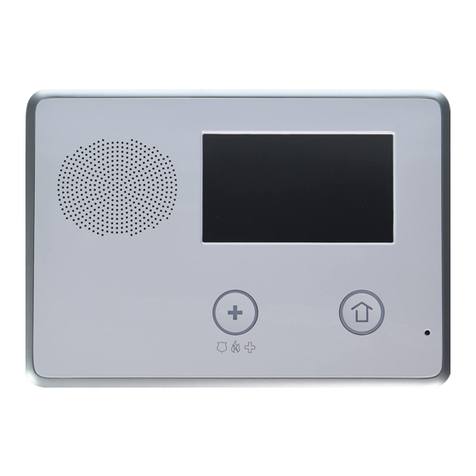
Gocontrol
Gocontrol 2GIG-CP2 Installation manual

Gocontrol
Gocontrol 2GIG-CNTRL2 User manual
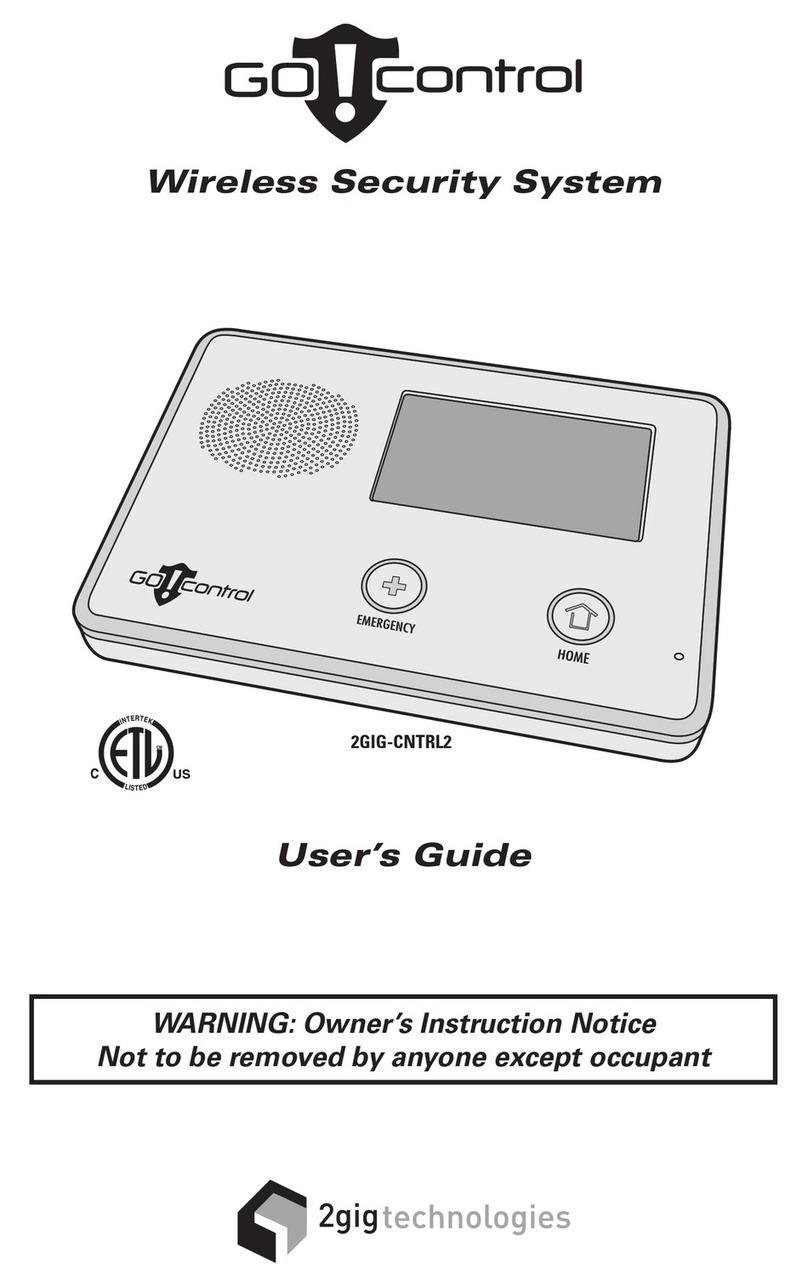
Gocontrol
Gocontrol 2GIG-CNTRL2 User manual
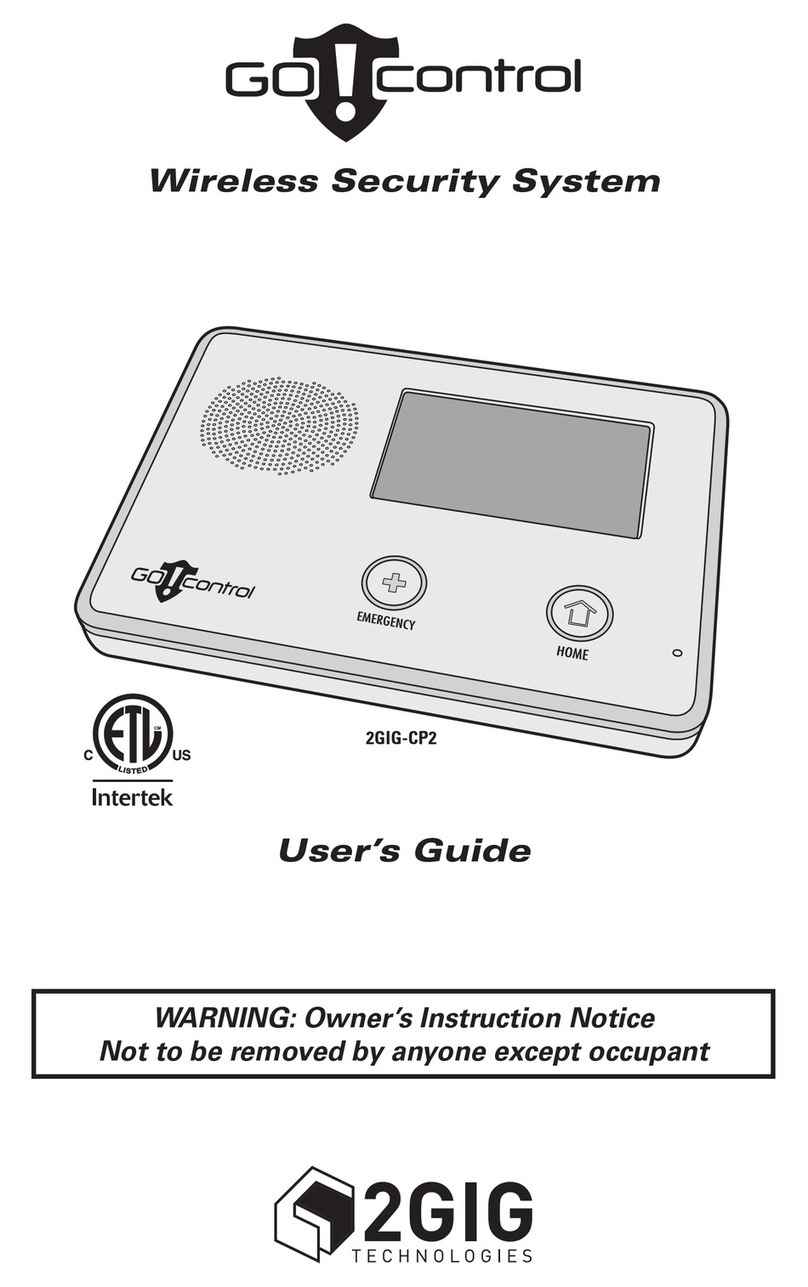
Gocontrol
Gocontrol 2GIG-CP2 User manual

Gocontrol
Gocontrol WNK01-21KIT Operating instructions

Gocontrol
Gocontrol 2GIG-CNTRL2 Installation manual

Gocontrol
Gocontrol 2GIG-CNTRL2 User manual
Popular Security System manuals by other brands

Yale
Yale HSA6200 quick guide
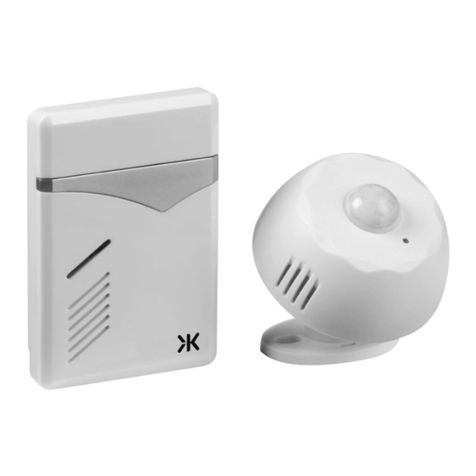
Knightsbridge
Knightsbridge DC006 Installation & maintenance manual

Radio Shack
Radio Shack 65562 owner's manual
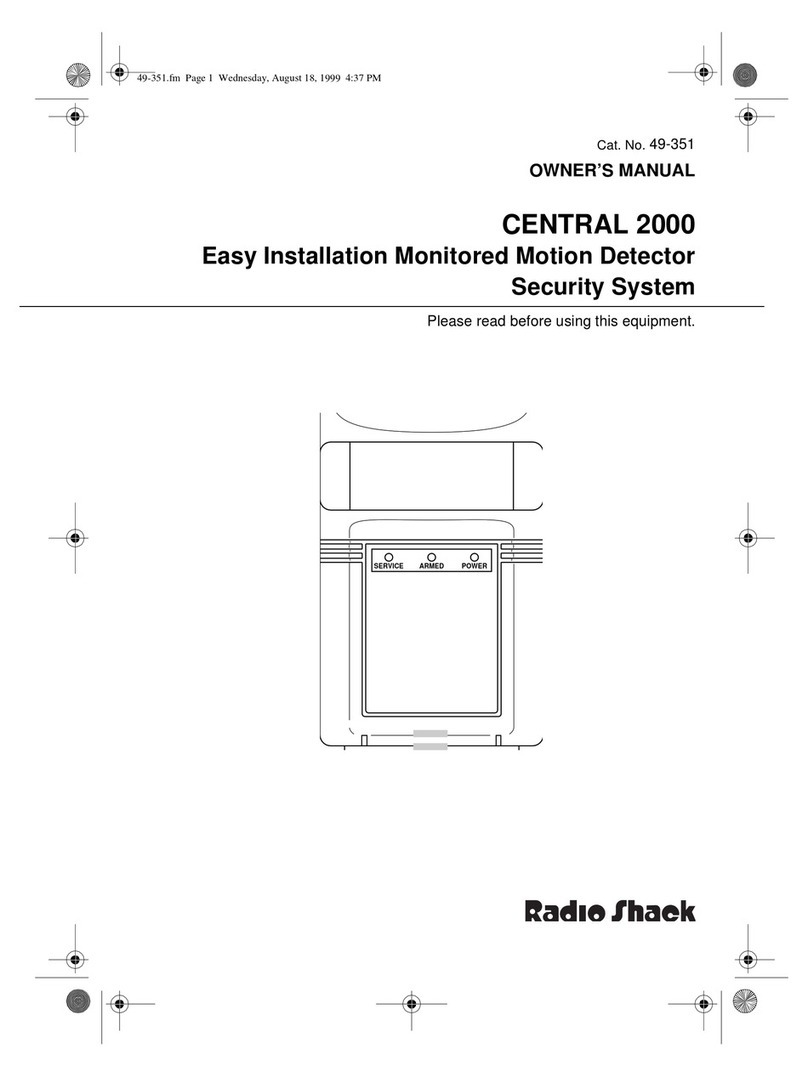
Radio Shack
Radio Shack CENTRAL 2000 49-351 owner's manual
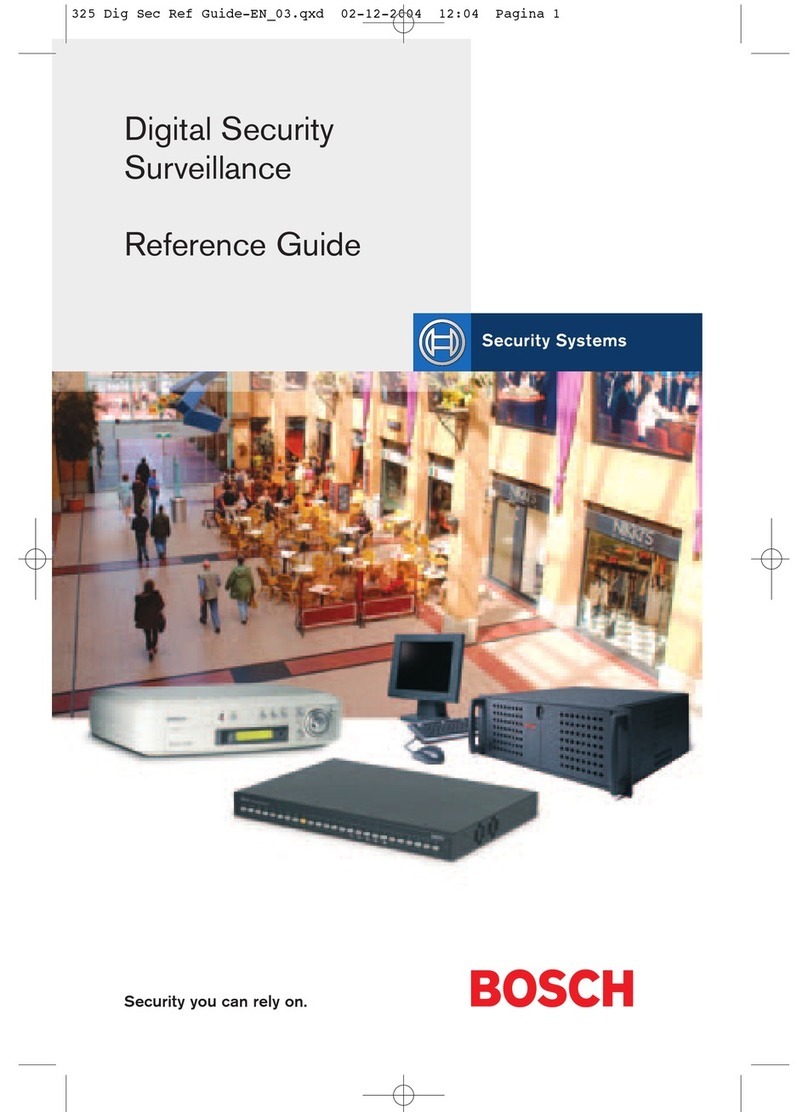
Bosch
Bosch DVR4C2161 reference guide
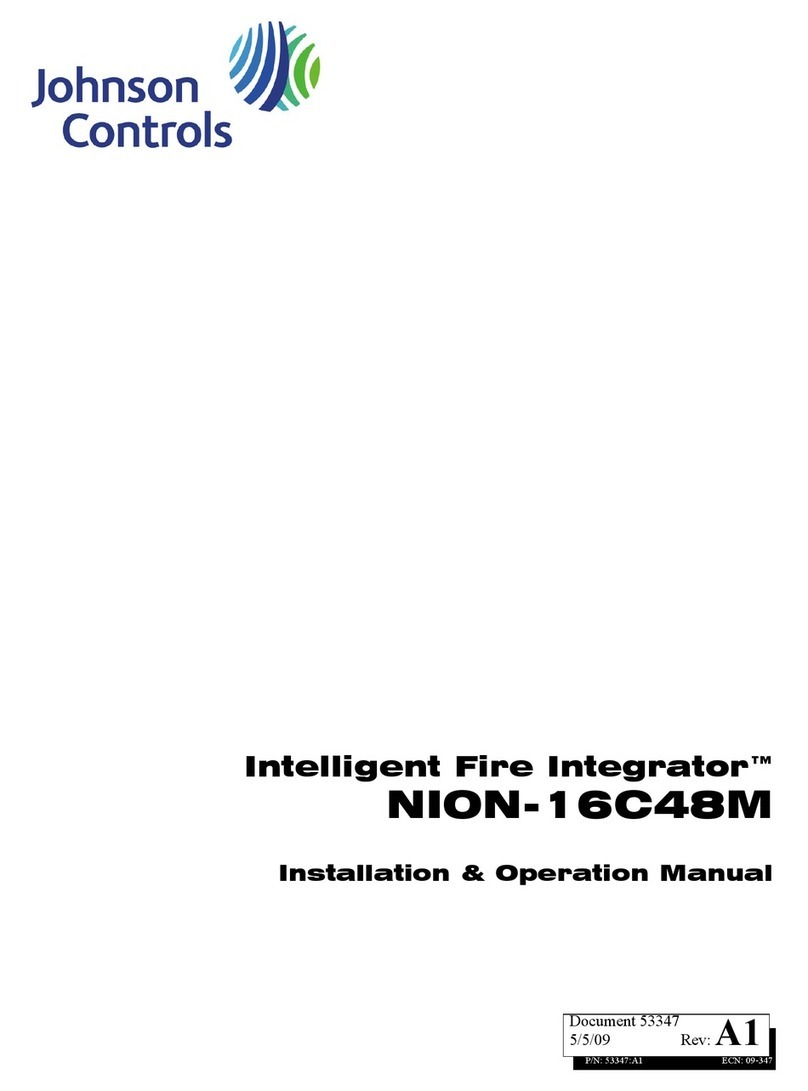
Johnson Controls
Johnson Controls Intelligent Fire Integrator NION-16C48M Installation & operation manual
